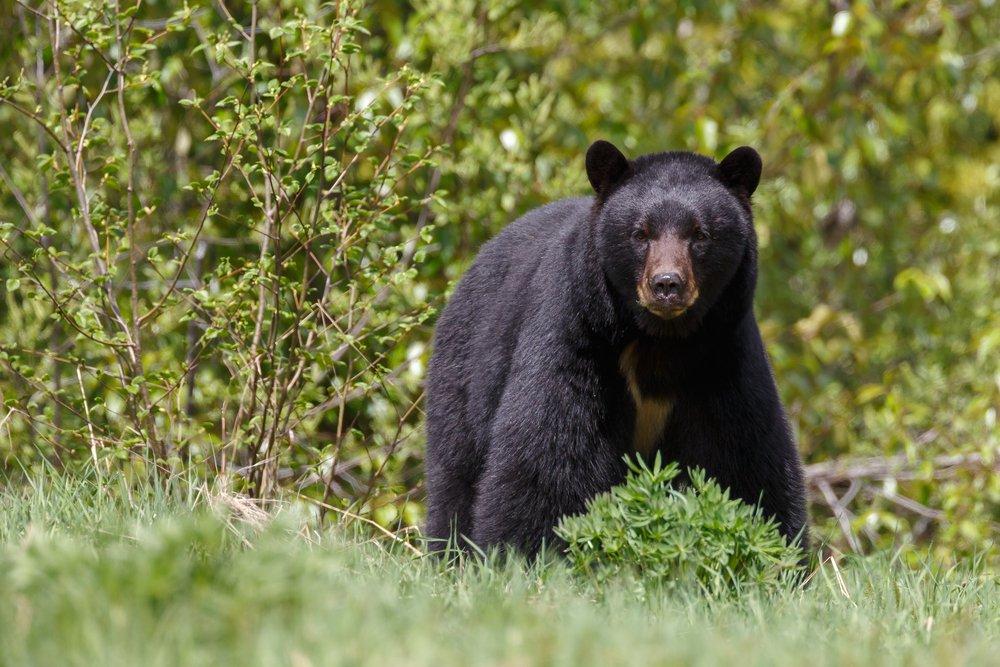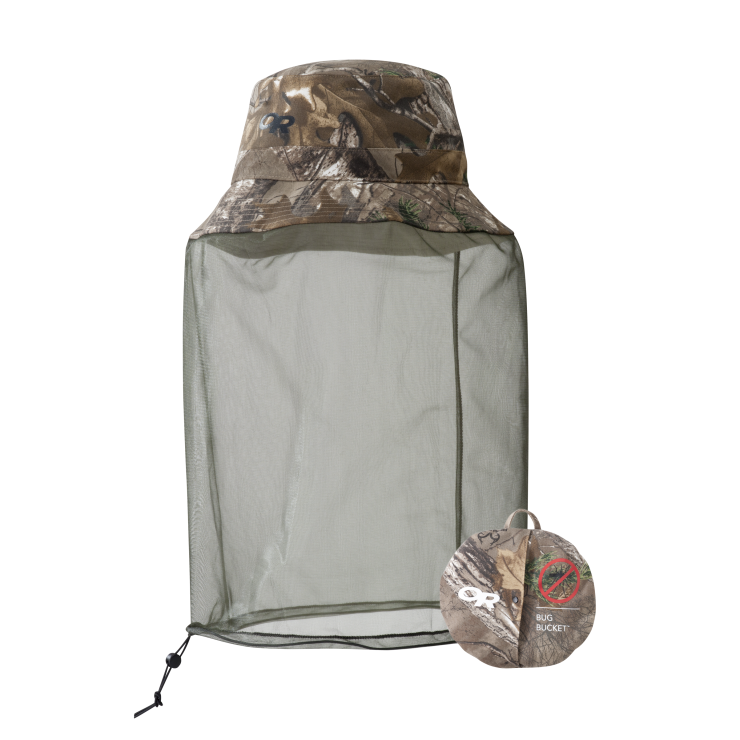Where Do You Hunt Black Bear?
The bear advanced, completely unaware of me. I sat high above him with my legs dangling, I was suspended and strapped to a tree in hopes of catching a glimpse of a black bear. Now, here he was ambling toward me, for many bear hunters just sighting a bruin in the woods is quite an accomplishment, for even in what is considered densely populated areas, the bear-to-square-mile ratio is one-to-one. What this means to the bear hunter is that, unlike a whitetail hunter who may have numerous spottings before bagging his buck, many bear hunters do not ever catch a glimpse of these black beauties during the entire season. How then can hunters, especially bowhunters, nurture a realistic hope for bagging a blackie with a bow?
The Bowhunting Mission
The answer is elementary, simple really. To be able to harvest a black bear, you must hunt where they are. Sounds obvious, but many hunters are not able to find a hot area that supports a bear, let alone several. How does one then determine if an area that may be great for whitetails in the fall, offers great bear hunting in the spring or fall?
First and foremost, the hunter must decide when he/she wants to hunt. Is he/she after a spring bear or waiting for an autumn harvest? The answer will determine how and where you should look for your quarry, but one basic technique will serve either situation -- scouting. In all big game hunts, scouting plays an integral part of preparing for a success, but perhaps nowhere is it as important as it is when hunting black bear. Pre-season scouting is critical. It may well mean the difference between a successful hunt or an empty bear tag.
Don't Miss: How to Field Judge Black Bears
Let us get back to our hypothetical wandering bear. Okay, you are in your stand and you catch a glimpse of a bear; obviously you are in an area that bears frequent. But, seeing that your skills and a whole lot of luck have allowed you to see this spectacle, put your spectacles on and really see him. Take advantage of any sightings and determine the age of the bear by closely looking at his body proportions. If his ears look large on his head and he seems very leggy and his face has a pointed look about it, he is a young bear. If, on the other hand his ears seem lost, his legs look small and his face is rounded and spherical, he is an old guy.
Even if you have seen him and decided you would like to nock an arrow with his name on it, you have still got plenty of scouting to do. If, like most bear hunters, you have to put in a lot of up-front work just to locate a potentially good area, your scouting becomes the means for you to acquire the edge you need to score a bear. Remember, you must hunt where the bears are and your scouting will tell you where they are or where they are not.
Gear Review: Frogg Toggs All Sport Rain Suit in Realtree Xtra and MAX-5
Depending upon what time of year the food sources are availability in a given area will greatly influence bear movements. Not only will the availability of food determine what distance a hungry bear will roam but a bear's elevation will increase in mountainous areas as summer foods become available. In the spring, bears eat mostly grass. As other foods appear they will gorge themselves on insects, berries, nuts, grains or carrion. Another indication of how available food is, albeit a very influential one, is the bear's preference for night feeding and daytime sleeping in the coolest, thickest area he can find. Sleeping away the heat of the day, while in the vicinity of an abundance of food, is a very habitual black bear habit.
Don't Miss: How to Stalk a Black Bear
Given that you have determined what the bears in your area would eat if they were present, you must determine if they in fact are frequenting the area. Again, your scouting can tell you this. Bears leave an abundance of various kinds of sign. Hunters get really excited when they see a bear track, but bear tracks only account for about 10 percent of the total calling cards they leave behind. One reason is that the flat, large foot does not easily make deep impressions in the soil, unless it is soft, moist, muddy or in snow. Bear sign can tell a hunter where, when and what a bear is eating, and some sign, including tracks, can also tell you the size and sex of a bear.
Sign to Scout
Bear tracks are easy to recognize. The rear print looks much like a human bare footprint. Even the front paws leave a similar print without the heel or instep area. Track width can determine size. A track that is wider than 5 inches in diameter belongs to an old male. A set of tracks closely followed by a smaller set indicates a sow with a cub. A discerning eye may be able to pick out a bear trail. This is not as easy as it sounds but a soft leaf-covered area will show the pattern of footfalls as eventually will a trail blazed across a grassy area. The hunter must look very carefully to see this type of sign, especially set against a backdrop lush with vegetation.
Don't Miss: Hunting Huge Canadian Black Bears
As bears are regular eating machines, droppings are a very evident and reliable source of bear activity insight. The color and consistency of the stool reflects the main food source. In the spring when grasses make up the major portion of a bear's diet, the droppings are green, resembling small green shredded wheat squares with the pieces of grass readily seen. When droppings are dark brown or black, the bear has switched from a vegetarian diet and has been eating meat. If a bear has devoured hordes of ants, the scat will be black with evidence of sawdust. When fruit and berries are available, the droppings may look like a heap of fruit skins and seeds. Bears who are pigging out in the corn will produce golden stools with corn kernels clearly discernable. The condition and appearance of the dropping pile can give clues as to how fresh the sign.
Bears are not neat eaters. When they are engaged on a feeding frenzy, they will trash small trees by bending them down to eat tender catkins of shoots. Berry bushes may be brutally stripped, snapped off or uprooted. Bears cause a lot of damage to trees and the like, this type of destructive behavior is yet another type of sign to look for.
Gear Review: Bug Bucket Camo Hat in Realtree Camo
"When checking stumps or logs that show signs of a bear's fierce claw marks, again check for age indicators."
Don't Miss: Top 10 States for Boone & Crockett Black Bear Hunting
In their search for honey, bees, ants and other insects, bears will roll over rocks and shred stumps and fallen logs. Learning how to read these indicators can help you determine when the hungry fellow has visited. Rocks first; if the area has stones that have been rolled over or displaced, check not only the exposed area but the condition of the vegetation under the rock's new location. If the grasses have begun to yellow and die, it has been a while. When checking stumps or logs that show signs of a bear's fierce claw marks, again check for age indicators. The coloration of the wood and presence of sawdust can tell you a lot about when the stump or log was ravaged. You can be reasonably sure the damage was very recent (since the last good rain), if loose sawdust is still there. If no sawdust is found but the exposed wood is yellow or brown, the slashings were done in the current year. Gray wood indicates more age.
Bears also strip the bark off trees to get at the soft layer underneath. You may find teeth marks in addition to the gouges left by their claws. The same coloration rules apply for aging these marks, gray marks means it is old. Some trees will even grow new bark over the claw marks, leaving grayish scabs the following year.
Bedding areas are difficult to locate, for by their very nature, they must be in an area where the bear can feel secure. Remember that bears like to bed down in a thick, dense, dark and cool spot. Look for soft depressions made in the ground at the base of large trees or outcroppings of rocks. Bear hair can usually be found on the ground in their beds.
Another place to look for shedding hair is on trees where the bears have rubbed themselves to lose their thick winter coat. Branches, fences, brambles all may be places to find this type of sign.
Don't Miss: The Hunt for a Kodiak Island Brown Bear
Bears climb trees to avoid danger or to munch on something. This can also leave very identifiable calling cards. Branches and limbs may be snapped off and broken as well as claw marks being gouged on the trunk when climbing.
Bears will also kill animals and eat carrion. Usually they devour the intestines first. They do not bury their food but will eat whatever they find. Eating involves a great part of a bear's activities and whether or not he is eating blueberries, thrashing about a cornfield, or attacking a deer fawn, a bear will fiercely defend his food source.
In case you thought the only bear sign to look for was a track, I hope that you realize that being aware of the different kinds of bear sign and how to interpret them can give you the tools you need to determine if the bears you want are present in a given area. You must hunt where the bears are in order to harvest one. Pre-season scouting can help you as well as give you valuable insight into the habits and habitat of one of the most challenging trophies to be taken with a bow -- a black bear.
Don't Miss: Plan a Grizzly Bear Hunt
Are you a big game hunter wanting to learn how to accomplish your goals? Check out our stories, videos and hard-hitting how-to's on big game hunting.









